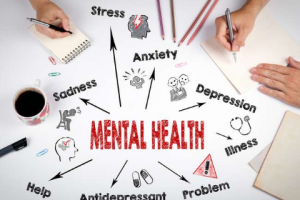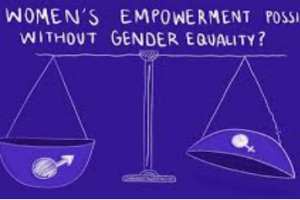
It is clear that Human immunodeficiency virus/Acquired immunodeficiency syndrome (HIV/AIDS) is one of the major public health burden creating impacts in a numbers of social and other sectors of countries. Through its broad economic impact, it is becoming an issue for social and macro economic analysis, and policies to prevent the spread of the virus.
The impact of HIV/AIDS epidemic has been experienced in many countries attained to the level of scorching the economy and, even more broadly, on societies, wellbeing and created huge burden creating scarcity of resources in providing services to the victims.
World HIV/AIDS Day was marked yesterday all over the world. Here in Ethiopia, the day was observed with creating awareness regarding the Virus and means to avert the challenges.
As indicated by Ministry of Health, the 36th World HIV/AIDS Day is an important global event that raises awareness about HIV/AIDS and shows solidarity with those affected by the disease. HIV/AIDS is one of the public health problems. The virus transmission is keeping on among key communities and mobilization for awareness creation is not at the level it used to.
According the Ministry, over eight thousand fellow citizens become positive and eleven thousand deceased per annual.
State Minister Dereje Duguma on his briefing in connection to the 36th World HIV/AIDS Day said that concerted efforts are under way to end epidemic by 2030. The Ministry along with pertinent stakeholders is planning 95 percent of all people living with HIV (PLHIV) should have a diagnosis, 95 percent of those should be taking lifesaving antiretroviral treatment (ART) and 95 percent of PLHIV on treatment should achieve a suppressed viral load for the benefit of the person’s health and for reducing onward HIV transmission.
Within the Ministry HIV/AIDS Response Desk COE Fikadu Yadeta for his part said that of the PLHIV is over seventy percent are below thirty years of age, where age groups 15-20 take the lion share and the prevalence of women is high.
The prevalence rate is now 0.9 and over 610 thousands of fellow citizens are living with the virus. The number of people with HIV/AIDS diagnosed receiving antiretroviral therapy is five hundred thousand and 11300 fellow citizens are deceased per annum.
The prevalence rate varies from State to State and communities to communities. Gambella States is leading with the prevalence rate of 3.69, the second leading is Addis Ababa City Administration making 3.47, Harerie 2.97, Diredawa 2.9 and the Ethiopia Somalia with least rate of prevalence 0.18. In general urban prevalence rate is 2 and the rural remains 0.4
The aggregate national HIV/AIDS prevalence rate is 0.9 that makes it below epidemic WHO alert standard one percent. This figure was 1.26 in 2017.
Of the venerable prostitutes take the highest rate, lethal drug addicts, citizens in the correction facilities need more focus than any victims of HIV/AIDS. Communities in priority high way distance drivers, widows, community areas affected by human and natural disaster, victims of sexual assault and adolescents are among the list.
Partnership with people living with and affected by HIV is critical to the sustainability and ultimate success of the HIV response. Ministry also stands with global partners to applaud the role of the communities in closing the testing, treatment and care gaps for those left behind and in driving progress towards ending AIDS as a global public health threat.
According to him when HIV/AIDS was at the scale of epidemic in the old day’s prevention and treatment was targeting the mass community, but now more focus will be given to the vulnerable communities.
Ministry will continue to work with partners through prioritizing the needs of affected populations, and enhancing prevention and testing as well as treatment endeavors.
Many communities, such as key populations sex workers, people who use drugs, and adolescents, still lack access to the prevention, treatment, and care services that they need and deserve. “Unless address this inequalities it could continue to drive the uneven progress on HIV, he underlined.
Speaking on the occasion Public Relation and Communication CEO Dr. Tegene Regassa calls for rigorous awareness creation platforms and trigger comprehensive behavioral change among the communities in various parts of the nation. He also calls on religious leaders and media houses as well as schools to discharge responsibilities accordingly and enhance awareness creating among communities in urban and hinterlands.
World AIDS Day is an opportunity to reflect on the progress made to date, raise awareness about the challenges that remain to achieve the goals of ending AIDS by 2030 and mobilize all stakeholders to jointly redouble efforts to ensure the success of the HIV response. The Ministry is working with pertinent stakeholders in address the impact of HIV/AIDS through collaboration nationwide. It was learnt that this year World AIDS Day 2023 motto is ‘Let communities lead.’
Since the discovery of the first HIV infection case in 1981, the global impact of HIV/AIDS has been significant. Approximately 85.6 million people worldwide have been living with HIV/AIDS since 1981.
World AIDS Day aims to educate people about HIV/AIDS, promote prevention measures, support those living with the disease, and remember those who have lost their lives to AIDS.
The red ribbon is the global symbol for solidarity with HIV-positive people and those living with AIDS. World AIDS Day is observed by all United Nations Member States and is recognized as an international event. By raising awareness and promoting understanding, the 36th World HIV/AIDS Day plays a crucial role in combating the spread of HIV/AIDS and supporting individuals and communities affected by the disease.
BY MENGISTEAB TESHOME
THE ETHIOPIAN HERALD SATURDAY 2 DECEMBER 2023





